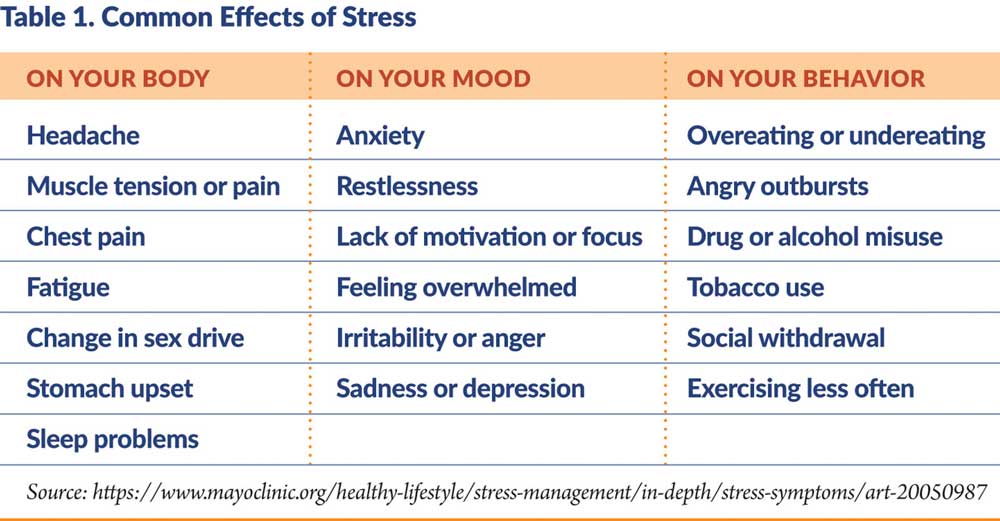
By Ann Marie Townshend, AICP
Work/life balance … We all strive for it, but can we really achieve it. For those of us who choose a career in local government management, work/life balance may be a struggle from the very beginning, when we try to prove ourselves and demonstrate our skills. The struggle continues, often becoming increasingly challenging with each step up the ladder.
As city managers, assistant managers, and department directors, we have signed up for jobs that have demands 24/7. Advances in technology have made it increasingly difficult to disconnect. Is there a way to achieve balance between work and the rest of our lives?
Defining Work/Life Balance
What exactly is work/life balance? The answer is likely to be different for each person and may vary with one’s stage in life and career. But we can identify a few common themes. Work/life balance involves splitting time among work/career, family, and self. It involves attending to mental and physical well-being and recognizing the physical and mental health risks that come when things are out of balance.
Given the importance of work/life balance to success in career and family and to mental and physical health, what can we do to achieve that balance? There’s no silver bullet, but this article will share some strategies we can use to create balance in our lives and to nurture workplace cultures that promote balance as well.
Effects of Stress on Physical and Mental Health
Local government management can be stressful as we strive to meet the expectations of multiple bosses as well as manage the day-to-day priorities of running the city or county. The breakdown of a trash truck can set back service delivery and be a budget buster. A downed tree knocking out power to a neighborhood may require the manager to come to work in the middle of the night on a Saturday. Tension between elected officials may have the manager playing referee. Each of these situations may cause stress, and none of them is an anomaly in local government.
While stress is part of life, chronic or prolonged stress is linked to health problems and burnout. According to the American Psychological Association, the longer stress lasts, the more dangerous it is for your mind and body.1 Chronic stress can directly affect health or lead to unhealthy behaviors such as overeating, smoking, and misuse of alcohol or drugs. The Mayo Clinic website includes a table of common effects of stress, noting that, if unchecked, stress can contribute to many health problems, including high blood pressure, heart disease, diabetes, and obesity.
Shawn VanVessen, a licensed clinical social worker with a private practice, frequently sees clients who are struggling to maintain a work/life balance.2 She says that many of her clients feel pressure because it’s difficult to get everything done and to feel that they’re successful in all facets of their lives.
Devoting time to oneself is an essential component of balance, and VanVessen notes the importance of self-care. She stresses the need for eating well, exercising, getting enough sleep, and carving out time to spend with people who are important to you. It’s particularly important to carve out time to spend with your significant other and to make that relationship a priority.

Changing Dynamics
As noted above, there’s no “one-size-fits-all” approach to work/life balance, and a person’s balance may change over time. As a young mother, having a job close to home was a key strategy for me. Geographic proximity allowed me to stop in at daycare, volunteer at school during my lunch hour, and stop at home to see my husband and sons before going to an evening meeting. Now my children are older, and I work for a municipality that is about 40 miles from home. It’s less important for me to be close, but it is important for me to leave early to get to my son’s golf matches.
Colleagues and friends have shared their experiences with achieving balance. One colleague has a demanding job that requires frequent travel. In her case, her husband left the workforce to stay home with their children. Another cut back to part time when her children were young to accommodate her husband’s work travel demands. Just as the family has changed over the decades, the ways in which families work to balance competing demands has changed as well.
Kyle Gay is a 33-year-old law associate working to grow her municipal law practice. She is a mother to two young children, ages two-and-a-half and six months. She says that for her, balance is when she’s happy in her work life and her home life.
While Gay can’t pinpoint anything specific, she says she can feel when things are out of balance. She typically works from home for a couple of hours every night after she puts her children to bed. Gay believes this is critical because it allows her flexibility during the day to take the kids to the doctor or have lunch with a friend. Other colleagues keep a firm line between work and home, not bringing any work home, and in some cases going back into the office after things wind down at home to get work done.
Strategies for Achieving and Maintaining Balance
So, if achieving balance is important to our health, our family, and our career, what strategies can we use to achieve and maintain balance?
Prioritize. For many years, we’ve heard the message that we can do it all. Not only has this been shown to be untrue, but it places undue pressure on all of us to achieve career and financial success, have a perfect home, and be perfect parents to perfect children. Trying to live up to all of these expectations sets us up for failure.
In their book The ONE Thing, Gary Keller and Jay Papasan argue that we can’t do it all and that we need to find and focus on the one thing that is most important and will have the most impact.3 While their book doesn’t focus on work/life balance, and even argues that it is a myth, Keller and Papasan focus on the importance of prioritization. They argue that success is not achieved by doing everything or by working more or longer hours, but by prioritizing that “one thing.”
Local government management imposes many after-hours demands on our time. Board, commission, and council meetings are most often in the evening. Community engagement activities are also scheduled for evenings and weekends for the convenience of residents. To maintain family as a priority with these work demands, a manager may need to leave the office early to attend children’s sporting events, art shows, and other important activities.
Similarly important is prioritizing at work. To-do lists will always be long, but without prioritization, managers find themselves extremely busy while getting little done. Create short to-do lists that are manageable and address priorities. Developing a system of prioritization that works for you will help with both stress reduction and work/life balance.
Communicate at home and at work. Kyle Gay, the law associate, notes the importance of communication to achieving and maintaining balance. She communicates with her associates and partners about her schedule limitations. She and her husband sit down every Sunday and preview the week ahead so that each knows what the other has planned. This way, if they need to ask a family member for help with the children, they can provide adequate notice.
Keeping a family calendar is also a good communication tool. While some use apps on smart phones or tablets, my family relies heavily on a calendar hanging on the kitchen wall. We use it only for events and appointments that are important for all of us to know about, and we refer to it daily. We plan meals, carpools, and everything else based on the calendar.
Communication also means listening to family members, including a spouse or significant other. I can count on my husband to tell me when things are out of whack, and I have often responded in a defensive manner. As I mature, I have tried to be mindful of my reaction and realize that my husband’s feedback is necessary to keeping a healthy balance.
Ask for help. Managers can ask for help by asking a friend or family member to pick up the kids or asking colleagues to chip in to help meet a priority in the office. So often we feel we need to do it all on our own. If we simply ask for help, we often find that others are more than willing to step in.
Asking for help can also mean knowing when you need more significant assistance in managing stress. Most organizations offer employee assistance programs (EAPs) at no cost to employees. These programs provide a variety of confidential services, including short-term counseling and referrals for employees who are experiencing personal and/or work-related problems. Perhaps short-term counseling services could provide you with strategies you need to get through a particularly stressful and challenging time. If needed, the EAP can provide referrals to longer-term counseling services.
Unplug. While technology has helped provide flexibility in how we work, it has also made it increasingly challenging to separate work life from home life. While completely disconnecting during “non-work” hours is likely impractical for municipal managers, it’s possible to unplug for certain periods of time.
In my household we implemented a rule that phones were not allowed at the dinner table. If a phone rang, the call would wait until dinner was done. This ensured that the time we spent together as a family every day was not interrupted by other distractions, whether work or social. Another strategy that works for some people is to disconnect prior to bedtime. Even if you must keep your phone close at hand in case of emergency, perhaps committing to no e-mail or social media after 10:00 p.m. will help. Whatever the strategy, designating a time to disconnect allows us to live in the moment and focus on family and self.
Attend to your health. Stay active, exercise, eat right, and get rest. Regular exercise is known to reduce stress and boost your immune system. While it can be a challenge to fit exercise into a busy schedule, developing healthy habits can mitigate stress. Habits are difficult to develop, but once in place they become second nature. Many managers have developed an exercise habit—a morning jog, regular gym time, or a lunch-time walk.
Similarly, while it’s easy to fall into the bad habit of skipping meals or grabbing meals on the go, planning ahead for meals or keeping nutritious foods on hand can ensure that a healthy diet doesn’t fall by the wayside. As an example, I try to keep tuna pouches, vegetables for salad, nuts, and fruit on hand so that no matter how unpredictable the day is, I can avoid eating junk food because it’s the only thing available.
Proper sleep is also vital to personal health and professional productivity. So if that city council meeting keeps you at work until midnight, find time in that week to rest and rejuvenate. Build your calendar around this and stick to it.
Avoid making too many commitments. When asked about the hardest part of balancing work and non-work priorities, several colleagues responded that the hardest part is saying no. Often, when we set priorities, it means saying no to the things that aren’t in this category.
Eric Norenberg, city manager in Milford, Delaware, says “while saying no is the hardest part of achieving balance, it gets easier over time.” Both Norenberg and Sharon Lynn, city manager in Rehoboth Beach, Delaware, note that saying no is particularly challenging early on in a job.
In addition to saying no, we need to communicate to our elected officials that if new projects and requests need to be prioritized, others may need to be deferred. An annual retreat to prioritize projects, plus periodic updates, can help with this, but managers also need to speak up when a request cannot be fulfilled.
Be the example. Norenberg points to the importance of setting an example for others in the organization. As a manager, if he tells his staff they should make family a priority, then he needs to walk the talk. Employees are going to pay more attention to the example he sets than to the words he speaks.
Norenberg has also created opportunities for city employees and their families to volunteer on service projects, providing a stronger connection to the community. This initiative also allowed employees to meet each other’s families and interact in a more relaxed environment than the typical workplace.
Because we’re managers, employees look to us to set the tone for the workplace. If we skip meals and work countless hours, those who want to move up in the organization will believe that is what it takes.
A Final Word
If I said that I’ve found the key to work/life balance and integrated it seamlessly into my career, that would be a lie. However, when I look back, I see how my family’s definition of balance has shifted over time and how we have adapted.
Each career move has included a family discussion about what the change will mean in terms of night meetings and other commitments. In my most recent move, I told my employer at the interview stage that I had promised my family that we would not move until the kids finished high school. This has meant a 40-mile commute, and it was important for me to know that both my family and my employer were on board.
At times, I’ve felt headed toward burnout because I was trying to do it all. The strategies suggested earlier have been important in pulling things back into balance. One final strategy for finding harmony in work and personal life is knowing when it’s time to move on. As many managers have learned, there are times when politics (at times directed toward the manager) become toxic and undermine a manager’s efforts to maintain balance. At these times, moving on may be the best option.
Remember, you’re more productive, healthier, and happier when you maintain a balance among all facets of your life. While sometimes this may feel like a lost cause, you can achieve it with prioritization, communication, attention to your personal needs, and openness to asking for help.

Endnotes and Resources
1 https://www.apa.org/helpcenter/stress.
2 Personal interview with the author.
3 Gary Keller and Jay Papasan, The ONE Thing: The Surprisingly Simple Truth Behind Extraordinary Results (Austin, Texas: Bard Press); copyright 2012 Rellek Publishing Partners Ltd.
New, Reduced Membership Dues
A new, reduced dues rate is available for CAOs/ACAOs, along with additional discounts for those in smaller communities, has been implemented. Learn more and be sure to join or renew today!
